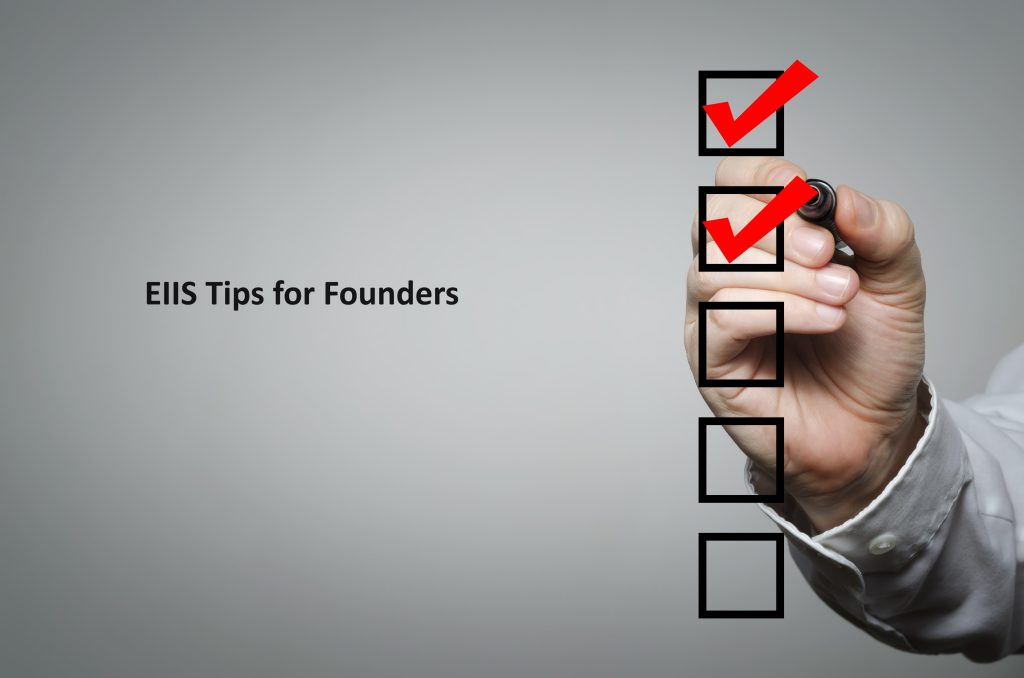In this blog post, we will lay out some top tips for any founder considering EIIS investment as a method of raising capital.
- Check your eligibility
Key Points to Consider (not exhaustive):
Are you:
- A limited company with a presence in Ireland
- In operation for <7 years,
- An SME – <250 employees and annual turnover <€50m or balance sheet <€43m?
There is a good chance you meet the above criteria, so the next step is confirming if your industry fits with the EIIS industry guidelines – you cannot qualify if you are operating in the below sectors:
- Financing Activities
- Professional services – legal, accounting, etc.
- One Off Trades – real estate development
- Extractive industries – eg mining, quarrying, etc.
Are you considered a Firm in Difficulty? This is only a consideration for businesses in operation >3 year and relates to accumulated losses.
Now, your plans should be aligned with EIIS Funding requirements, so you should be seeking to grow the business and increase headcount by 1 or more person over the next four years.
If you meet the above, EIIS Investment could be a good match for your business.
- Think carefully about your first raise.
You only get one shot at 35% – use it wisely. The tax relief levels available to investors are listed below:
- 50% for companies who have not traded in any market.
- 35% for a first EIIS fundraise.
- 20% for a second or subsequent EIIS fundraise.
In other words, don’t raise €150k at 35% when you’ll need to raise €1m next year which will be at 20%. The most common target for EIIS funds is 35%, as these typically have lower risk than those at 50% but a much greater relief than follow-on funding.
- Consider 4 year horizon – repayment and exit.
4 years is the standard EIIS funding horizon. In general, these investments will not convert to ordinary equity, and instead will be repaid in full, plus a coupon.
Is the path to profitability achievable in a way that allows free cash flow to build up during the next 4 years? Alternatively, can the EIIS funding be repaid through refinancing? It is in your best interest to repay the investor(s) so they do not convert to ordinary equity at a discount, which would dilute your own ownership of the company.
Management fees are also part of most EIIS investments.
- Draft a business plan
A business plan is an essential part of an EIIS investment. Consider what you are hoping to achieve with the capital and calculate an ideal figure to get there.
The planned use of funds must be in accordance with the requirements laid out by Revenue.
- Who are you bringing on board?
As with an equity investor, EIIS investors are going to be involved for the long-term. It is important to assess what benefits the new investor(s) brings to the table. A dedicated EIIS fund has the advantage of offering support, additional services and a group of investors who want to see you succeed. It is in their best interest to help you grow so their investment is secure.
If you would like to learn more, get in touch by emailing info@eiis.ie.


